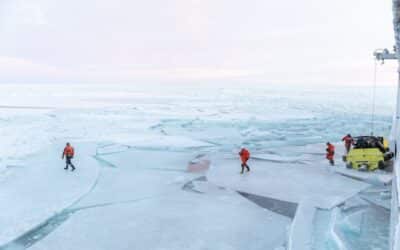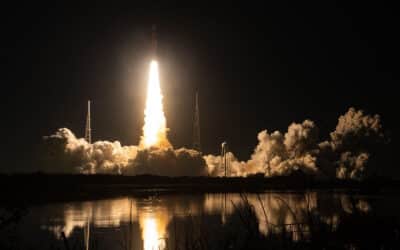February 8, 2021
To:
Per Bolund, Minister for Environment and Climate, and Deputy Prime Minister
Ibrahim Baylan, Minister for Business, Industry and Innovation
Matilda Ernkrans, Minister for Higher Education and Research
cc:
Stefan Gardefjord, President and CEO of Swedish Space Corporation
Monica Lingegård, Chairperson of the Board of Swedish Space Corporation
Dear Minsters Bolund, Baylan and Ernkrans,
We are writing to express serious concern regarding a planned test by the Stratospheric Controlled Perturbation Experiment (SCoPEx) project towards the development of geoengineering technology, to be conducted with the direct involvement of the state-owned Swedish Space Corporation (SSC).
In June 2021 SSC is planning to facilitate a Stratospheric Aerosol Injection (SAI) related test out of SSCs facilities in Kiruna, Northern Sweden. SAI is a form of solar geoengineering which, if developed and deployed, would attempt to reduce the amount of sunlight reaching the earth’s surface by injecting large volumes of sun-blocking particles into the upper levels of the earth’s atmosphere.
While the first stratospheric flight proposed for Kiruna intends to test the balloon and gondola equipment, the stated purpose of the flight is to prepare for the release of aerosols into the stratosphere later in the year—a test SCoPEx hopes might be possible to conduct in Kiruna. This would be the first known SAI related open air release of particles.
Since the goal of the initial flight is to enable the subsequent release of particles, the social and environmental impacts of this test cannot be evaluated in isolation from the overall purpose of the SCoPEx project. The balloon flight must be viewed as integral to the project’s intention of conducting open-air testing and particle release.
We appeal to the Swedish government to oppose the SSC’s involvement with SCoPEx’s proposed tests, as they are fundamentally incompatible with the precautionary principle, in breach of international norms, and inconsistent with Sweden’s own climate policy framework1 as well as its reputation as an international climate leader.
SAI is a technology with the potential for extreme consequences, and stands out as dangerous, unpredictable, and unmanageable. There is no justification for testing and experimenting with technology that seems to be too dangerous to ever be used.
Even proponents of the technology acknowledge that, if implemented at the scale necessary to have an impact on global temperatures, SAI and other solar geoengineering technologies could set in motion inherently unpredictable shocks to the climate system, which could alter hydrological cycles, disrupt monsoon patterns and increase drought. Rather than mitigating the risks of climate change, SAI would likely exacerbate and compound the extreme weather and climate instability that global warming is already causing. For example, computer modelling suggests that SAI could disrupt the sources of food and water for 2 billion people in Asia and Africa in unpredictable ways.2
Another, fundamental concern is that because SAI only temporarily masks the warming effect of greenhouse gases by blocking sunlight, suddenly stopping the injection of these sunlight-blocking particles would very likely cause a sudden spike in temperatures. The threat of this kind of ”termination shock” could lock the world into an irreversible nightmare situation where stopping SAI may be worse than continuing, despite mounting catastrophes.
In view of the uncertainties and profound risks of geoengineering, and with Swedish leadership, the UN Convention on Biological Diversity (CBD) introduced 2008-10 a de facto moratorium on geoengineering.3 The Intergovernmental Panel on Climate Change cautions strongly against any reliance on SAI, and solar geoengineering technologies were not included in any modeled pathway in the IPCC’s landmark Special Report on 1.5C.
The real danger of SCoPEx’s plans for Kiruna lies not in the research itself, but in the very real global ramifications of proceeding along a slippery slope towards normalization and deployment. Several critics and researchers point to the danger of assuming that a forceful technology such as SAI could be kept on the shelf as a “plan B” without opening the door to the potential that, once developed, powerful interests could move to unilateral deployment, with significant implications for peace, security and human rights around the world.4
The political risk involved in this test is hence the most pressing concern. The idea of the possible future use of SAI is already serving as an excuse for actors who directly benefit and profit from continued carbon emissions to delay and evade action. Further development of SAI as a possible “emergency technology” risks deflating the critical pressure necessary to transition to zero-carbon societies in time, which could prove detrimental for the world’s efforts to deal with the climate crisis.
We also note that the decision-making process does not appear to include any populations potentially affected by the technology in Sweden or globally, neither do there seem to have been sincere processes to ensure free prior and informed consent in accordance with the United Nations Declaration on the Rights of Indigenous Peoples (UNDRIP).
If SCoPEx proceeds in Kiruna there could be serious consequences for Sweden’s reputation as a climate leader. In the lead-up to the Stockholm +50 conference in 2022, Sweden is in a unique position to show leadership in pressing for the rapid transition to real zero-emission societies, 100% renewable energy, and the global phase-out of fossil fuel production. Having a state-owned corporation facilitate the advancement of solar geoengineering derails such ambition and risks seriously tarnishing Sweden’s international standing.
Sweden has long championed human rights and climate policy. It is with this in mind, that we respectfully urge the Swedish government to take a strong and explicit stand against the SCoPEx test, and against SAI and geoengineering technologies in general. Any action towards eventual deployment of SAI risks distracting the world from urgently reducing greenhouse gasses and advances a technology that has the potential to put the atmosphere, environment and communities in Sweden and around the world at even greater risk.
Sincerely,
Johanna Sandahl, President of SSNC, on behalf of
Greenpeace Sweden
Jordens Vänner / Friends of the Earth Sweden
Naturskyddsföreningen / Swedish Society for Nature Conservation (SSNC)
Action Group on Erosion, Technology and Concentration (ETC Group)
Biofuelwatch
Center for International Environmental Law (CIEL)
Climate Justice Alliance (CJA)
Friend of the Earth International
Heinrich Böll Foundation
Indigenous Environmental Network (IEN)
WhatNext?
End notes:
1. Contrary to Sweden’s Climate Policy Act, stratospheric aerosol injection does not focus on reducing carbon dioxide and other greenhouse gas emissions that are the primary drivers of the climate crisis, but instead seeks to mask GHG impacts by injecting other pollutants into the atmosphere to block sunlight from warming the earth.
2. Robock, Alan, et al. (2010) A Test for Geoengineering? Science Magazine Volume 327 https://climate.envsci.rutgers.edu/pdf/TestForGeoengineeringScience2010.pdf
3. UN Convention on Biological Diversity, COP decisions on Climate-related Geoengineering and Biodiversity: https://www.cbd.int/climate/geoengineering/
4. Pierrehumbert, Raymond (2019). There is no Plan B for dealing with the climate crisis. Bulletin of the Atomic Scientists Volume 75, Issue 5. https://www.tandfonline.com/doi/full/10.1080/00963402.2019.1654255
Download the PDF version of the letter to the Swedish Government here.



